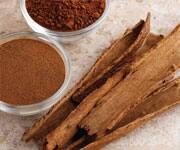Life Extension Magazine®
Dietary Supplements and Exercise Associated with Lower Heart Disease Risk in Women | |
In the Journal of Clinical Nursing, researchers from Taiwan report a reduction in the incidence of coronary artery disease (CAD) in middle-aged women who engaged in exercise or used dietary supplements.* The study included 65 women whose age averaged 56.2 years. Cardiac catheterization revealed the presence of coronary artery disease in 31 subjects. Questionnaire responses provided data concerning activity levels and the intake of dietary supplements over the preceding year and others. Blood samples were analyzed for fasting glucose, lipids, and additional factors. Adjusted analysis of the data uncovered a 72% lower risk of coronary artery disease in supplement users compared to nonusers, and an 84% lower risk of CAD among those who engaged in physical activity in comparison with inactive women. Editor’s Note : Authors C. C. Tsai and colleagues remark that by reducing lipid peroxidation and free radical damage, vitamins C and E, and other antioxidants help protect the heart’s blood vessels. In addition, studies have found a reduction in low-density lipoprotein cholesterol and triglycerides in association with increased vitamin C intake. Furthermore, B vitamins can help prevent increases in serum homocysteine, which damages the lining of the vessels, lowers nitric oxide levels, and alters platelet activity. —D. Dye | |
| Reference | |
* J Clin Nursing. 2013 Jun 7. | |
Increased Breast Cancer Risk Associated with Deficient Vitamin D Levels in Saudi Women | |
The American Journal of Clinical Nutrition recently published the findings of researchers from Saudi Arabia and the University of Arizona of a greater risk of breast cancer among women with deficient levels of serum vitamin D.* Fatimah M. Yousef and her associates compared 120 Saudi women with invasive breast cancer with 120 age-matched controls. Dietary questionnaires completed by the participants provided information concerning vitamin D intake. Blood samples were analyzed for serum 25-hydroxyvitamin D levels.
Dietary intake of vitamin D among the participants was low. Average serum 25-hydroxyvitamin D levels were 9.4 ng/mL among subjects with breast cancer in comparison with 15.4 ng/mL in the control group. While 38.3% of the control group had deficient vitamin D levels of less than 10 ng/mL, this percentage rose to 60.8% of the breast cancer group. Optimal 25-hydroxvitamin D blood levels are between 50-80 ng/mL. Religious laws in Saudi Arabia prohibit women from exposing their skin in public. Lack of sunlight and lack of supplements results in very low vitamin D levels and subsequent increases in breast cancer rates. Editor’s Note: When women whose vitamin D levels were less than 10 ng/mL were compared with those whose levels were greater than 20 ng/mL, the risk of breast cancer was more than six times higher in the lower vitamin D level group.
—D. Dye | |
| Reference | |
* Am J Clin Nutr. 2013 Jul; 98(1)105-10. | |
Increased Vegetable Fat Intake Linked with Lower Risk of Premature Death in Prostate Cancer Patients | |
In JAMA Internal Medicine, researchers from the University of California and Harvard report an association between greater consumption of vegetable fat intake and a lower risk of dying over an 8.4 year median among men with prostate cancer.* The investigation included 4,577 men who were diagnosed with nonmetastatic prostate cancer between 1986 and 2010. Questionnaires completed at the beginning of the study and every four years thereafter provided data on fat intake. Events of lethal prostate cancer, defined as the occurrence of distant metastases or death from the disease, occurred in 315 subjects. The adjusted risk of events of lethal prostate cancer was 16% higher among those whose animal fat intake was among the top 20% in comparison with those whose intake was among the lowest 20%. In contrast, an intake of vegetable fat that was among the top 20% was associated with a 36% lower risk. Editor’s Note: When death from any cause was examined, those whose animal fat intake was highest had a 19% greater risk of dying over follow-up in comparison with the lowest group, and those whose vegetable fat intake was highest had a 35% lower risk. —D. Dye | |
| Reference | |
* JAMA Int Med. 2013 Jun 10. | |
Decreased DHEA Sulfate Levels Linked to Greater Stroke Risk in Women | |
In an article published in the American Heart Association journal Stroke, researchers from Brigham Women’s Hospital and Harvard School of Public Health report an association between lower levels of the hormone dehydroepiandrosterone sulfate (DHEAS) and a greater risk of stroke in older women.* The study included women who had no history of stroke upon enrollment in the Nurses’ Health Study in 1976. Stored blood samples obtained between 1989 and 1990 were analyzed for DHEA sulfate levels. Four hundred sixty-one participants in whom stroke had occurred over follow-up were matched for age, race, menopausal status, and other factors with 461 control subjects. Among women whose DHEAS levels were among the lowest 25% of participants in the current study, the adjusted risk of experiencing an ischemic stroke was 33% higher than that of women whose levels were among the top 25%. Editor’s Note: Authors Kathryn M. Rexrode MD, MPH, and colleagues note that DHEA could influence the development of cardiovascular disease and stroke through mechanisms that include inhibition of the migration and proliferation of vascular wall cells, and stimulation of vascular smooth muscle cell apoptosis, which reduces vascular remodeling subsequent to injury. —D. Dye | |
| Reference | |
* Stroke. 2013 May 23. | |
Higher Dose Metformin Associated with Improved Survival Among Colorectal Cancer Patients | |
Cancer Epidemiology, Biomarkers & Prevention published an article that reports a positive effect for the antidiabetic drug metformin in colorectal cancer survival among men and women with stage I-III colorectal cancer diagnosed between 2001 and 2006. Participants included 207 diabetics who had been prescribed metformin, 108 diabetics who did not use the drug, and 3,501 nondiabetics.* The subjects were followed through 2010, during which 196 deaths occurred among those with diabetes and 1,897 occurred among the nondiabetics. When subjects treated with metformin were compared to diabetics who were not treated with the drug, a reduction in the risk of death due to colorectal cancer that “approached significance” was observed. However, those whose use of metformin was categorized as high intensity had a 56% lower risk of dying of the disease than diabetics not treated with metformin. Intensity of metformin use was calculated as high or low based the number of days that metformin was presumably taken in the year prior to a cancer diagnosis. The average dose of metformin used by study participants was 1,148 mg daily. Editor’s Note: Metformin use was additionally associated with a 31% lower adjusted risk of dying from any cause among diabetic subjects over follow-up. —D. Dye | |
| Reference | |
* Cancer Epidemiol Biomark Prev. 2013 Jun 10. | |
Research Supports Causative Role for Reduced Vitamin D Levels in High Blood Pressure | |
At the annual conference of the European Society of Human Genetics, Dr. Karani S. Vimaleswaran presented the finding of a causative role for vitamin D in the development of hypertension.* Dr. Vimaleswaran reported the findings of the D-CarDia collaboration that included over 35 studies involving up to 108,173 participants, which associated higher serum 25-hydroxyvitamin D levels with lower blood pressure. To validate causation, a team of researchers examined the association of four vitamin D-related genetic variants known as single nucleotide polymorphisms (SNPs) with 25-hyroxyvitamin D levels and with hypertension. An association with serum 25-hydroxyvitamin D levels was confirmed for all SNPs. The researchers also uncovered an association between one SNP (CYP2R1) and diastolic blood pressure and hypertension. Following further analysis, it was concluded that reduced vitamin D levels have a modest causal association with hypertension. Editor’s Note: A decrease in diastolic blood pressure of 0.24 mmHg and a 7% decrease in the risk of hypertension were associated with each 10% increase in serum 25-hydroxyvitamin D. —D. Dye | |
| Reference | |
* Annual Conference of the European Society of Human Genetics. 2013 June 11. | |
Higher Plasma Vitamin D Levels Associated with Lower Biomarkers of Cardiometabolic Disease | |
The United States Centers for Disease Control and Prevention (CDC) reports a reduction in risk factors for cardiometabolic disease among men and women with higher plasma vitamin D levels.* Canadian researchers evaluated data from 1,928 men and women between the ages of 6 and 79 years who participated in the Canadian Health Measures Survey. Blood samples obtained during physical examinations were analyzed for glucose, fasting insulin, C-reactive protein, fibrinogen, homocysteine, triglycerides, total cholesterol, high-density lipoprotein cholesterol (HDL-C), low-density lipoprotein cholesterol (LDL-C), apolipoprotein A1, apolipoprotein B, and 25-hydroxyvitamin D [25(OH)D]. Vitamin D levels varied according to the month during which plasma levels were sampled. Subjects who had higher levels of vitamin D had reductions in insulin, insulin resistance, triglycerides, total cholesterol, LDL cholesterol, and ratio of total to HDL cholesterol. Editor’s Note: Cardiometabolic disease, also known as metabolic syndrome, is characterized by dyslipidemia, dysglycemia, abdominal obesity, and hypertension, which greatly increase the risk of cardiovascular disease and diabetes. —D. Dye | |
| Reference | |
* Prev Chronic Dis. 2013 Jun 6;10:E91. | |
Cinnamon Compounds May Protect Against Tau Protein Aggregation in Alzheimer’s Disease | |
The Journal of Alzheimer’s Disease published an article by Donald J. Graves and his associates at the University of California, Santa Barbara which describes how compounds in cinnamon reduce the aggregation of tau protein that occurs, along with amyloid-beta aggregation, in the brains of men and women with Alzheimer’s disease.* Tau protein is responsible for the assembly of microtubules within the cell that form its structure. When tau does not effectively bind to the microtubules, it clumps together, forming tangled fibers. Previous research conducted by Dr. Graves’ team uncovered an ability of cinnamon extract to inhibit tau aggregation and dissociate tangles in brain tissue derived from Alzheimer’s disease patients. The current study revealed that the compounds cinnamaldehyde and the oxidized form of epicatechin derived from cinnamon extract inhibited tau aggregation in vitro by protecting the protein from oxidative stress. Editor’s Note: Lead author Roshni C. George noted that, “Cell membranes that are oxidized also produce reactive derivatives, such as Acrolein, that can damage the cysteines. Epicatechin also sequesters those byproducts.” —D. Dye | |
| Reference | |
* J Alz Dis. 2013 Jun;36(1)21-40. | |
Preventing Vitamin D Deficiency May Help Delay Early Puberty | |
A presentation at The Endocrine Society’s 95th Annual Meeting held in San Francisco this year revealed a greater risk of precocious puberty in girls with deficient levels of vitamin D in comparison with girls who entered puberty at a normal age.* The research included 110 girls aged 7 to 10 years, among whom 35 were categorized as having experienced precocious puberty according to the Tanner Scale. Blood samples collected from the subjects were analyzed for serum 25-hydroxyvitamin D levels and other factors. Vitamin D levels were lower on average among girls with early puberty in comparison with girls who entered puberty at a normal age. Forty-four percent of the girls who underwent precocious puberty had serum 25-hydroxyvitamin D levels that were classified as severely deficient at less than 10 ng/mL in comparison with 21% of the normal group. Editor’s Note: In additional experimentation, the researchers found that the administration of vitamin D suppressed the ability of N-methyl-D-aspartate (NMDA) to release gonadotropin-releasing hormone (GnRH, which triggers the ovulation process) from neurons. —D. Dye | |
| Reference | |
* The Endocrine Society’s 95th Annual Meeting, San Francisco. 2013 Jun 17. | |
Life-Extending Mechanism of Rhodiola Explored | |
The journal PLOS ONE published an article that reports a benefit for Rhodiola rosea in extending the life span of fruit flies.* The herb does not appear to promote longevity via mechanisms involved in calorie restriction, which is a well-known method of extending life span in experimental models. Previous studies revealed that Rhodiola can extend the lives of flies, yeast, and worms. In order to determine whether Rhodiola utilized the same mechanisms as calorie restriction, Mahtab Jafari and colleagues at the University of California, Irvine gave Rhodiola to fruit flies provided with diets containing reduced amounts of yeast. If Rhodiola extended life span in a manner similar to that of dietary restriction, it was not expected to be associated with longer life in animals in which the molecular pathways associated with dietary restriction were already affected, but Dr. Jafari’s team observed an increase in life span in male and female flies that received Rhodiola. Editor’s Note: In fruit flies in which the known molecular pathways associated with calorie restriction (including silent information regulator 2 (SIR2) proteins, insulin, and insulin-like growth factor signaling and target of rapamycin pathways) were perturbed, Rhodiola still elicited an extension of life span. —D. Dye | |
| Reference | |
* PLOS ONE. 2013 May 21. | |
Diabetes Risk Linked to Red Meat Consumption | |
Red meat consumption has been consistently associated with an increased risk of type II diabetes mellitus. However, whether changes in red meat intake are related to subsequent type II diabetes risk remains unknown.* A study published in the Journal of the American Medical Association set out to examine this association. The study followed up with 26,357 men in the Health Professionals Follow-up Study (1986-2006), 48,709 women in the Nurses’ Health Study (1986-2006), and 74,077 women in the Nurses’ Health Study II (1991-2007). Diet was assessed by validated food frequency questionnaires and updated every four years. Time-dependent models were used to calculate the effects of age, family history, race, marital status, initial red meat consumption, smoking status, and changes in other lifestyle factors (physical activity, alcohol intake, total energy intake, and diet quality). The study concluded that increasing red meat consumption over time is associated with an elevated subsequent risk of type II diabetes, and the association is partly mediated by body weight. Their results add further evidence that limiting red meat consumption over time confers benefits for type II diabetes prevention. —M. Richmond | |
| Reference | |
* Available at: http://archinte.jamanetwork.com/article.aspx?articleid=1697785. Accessed June 21, 2013. |










